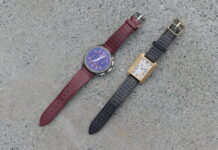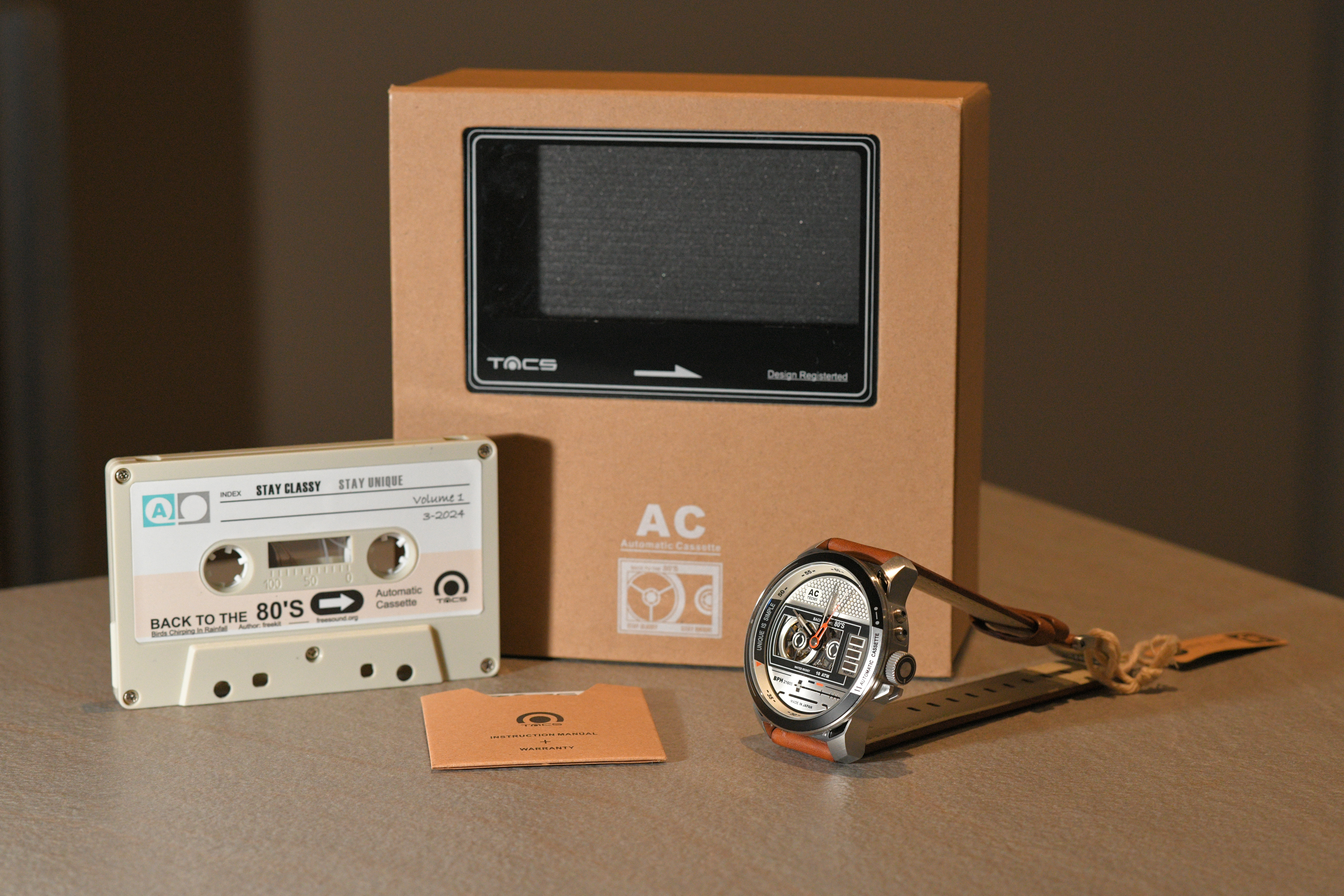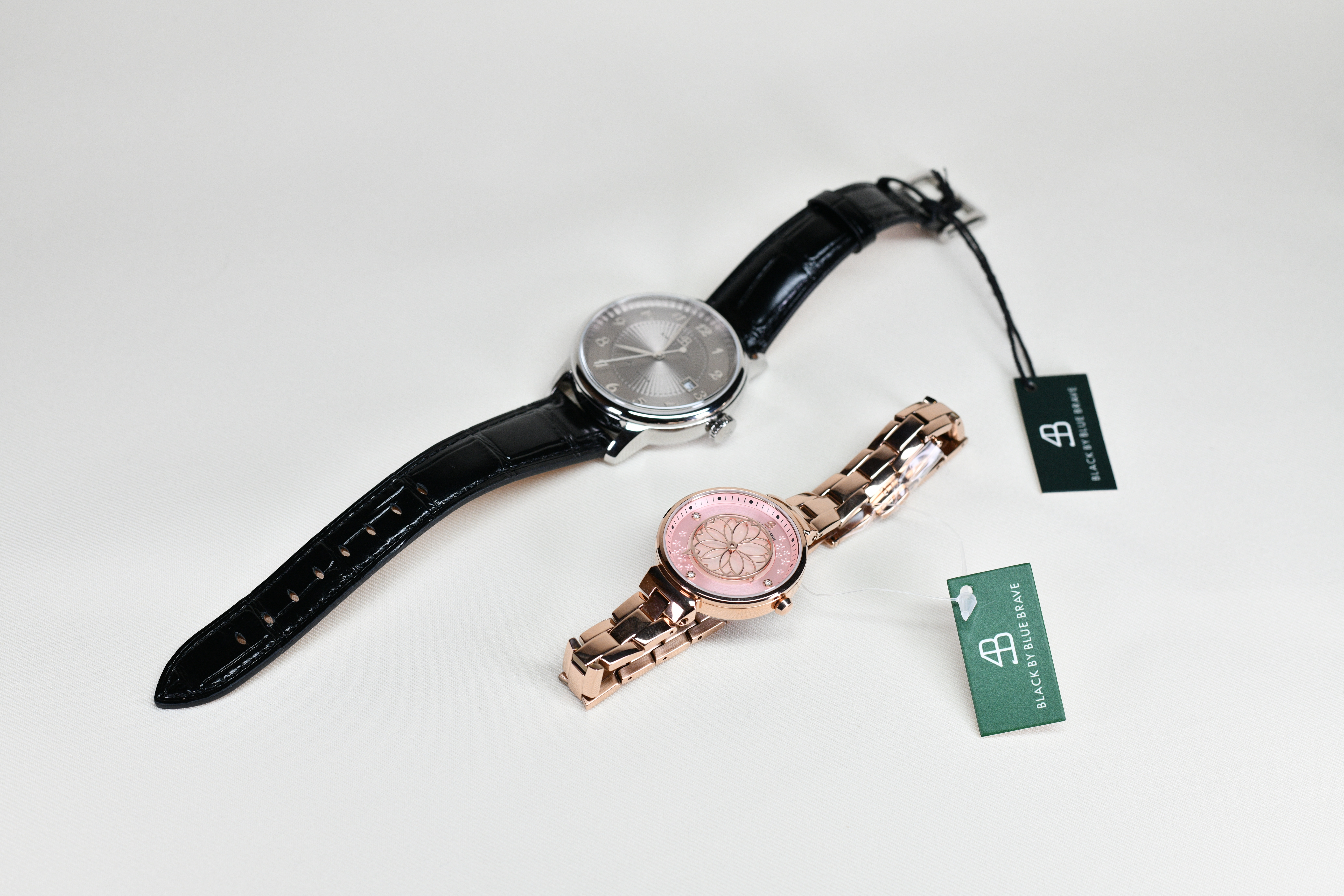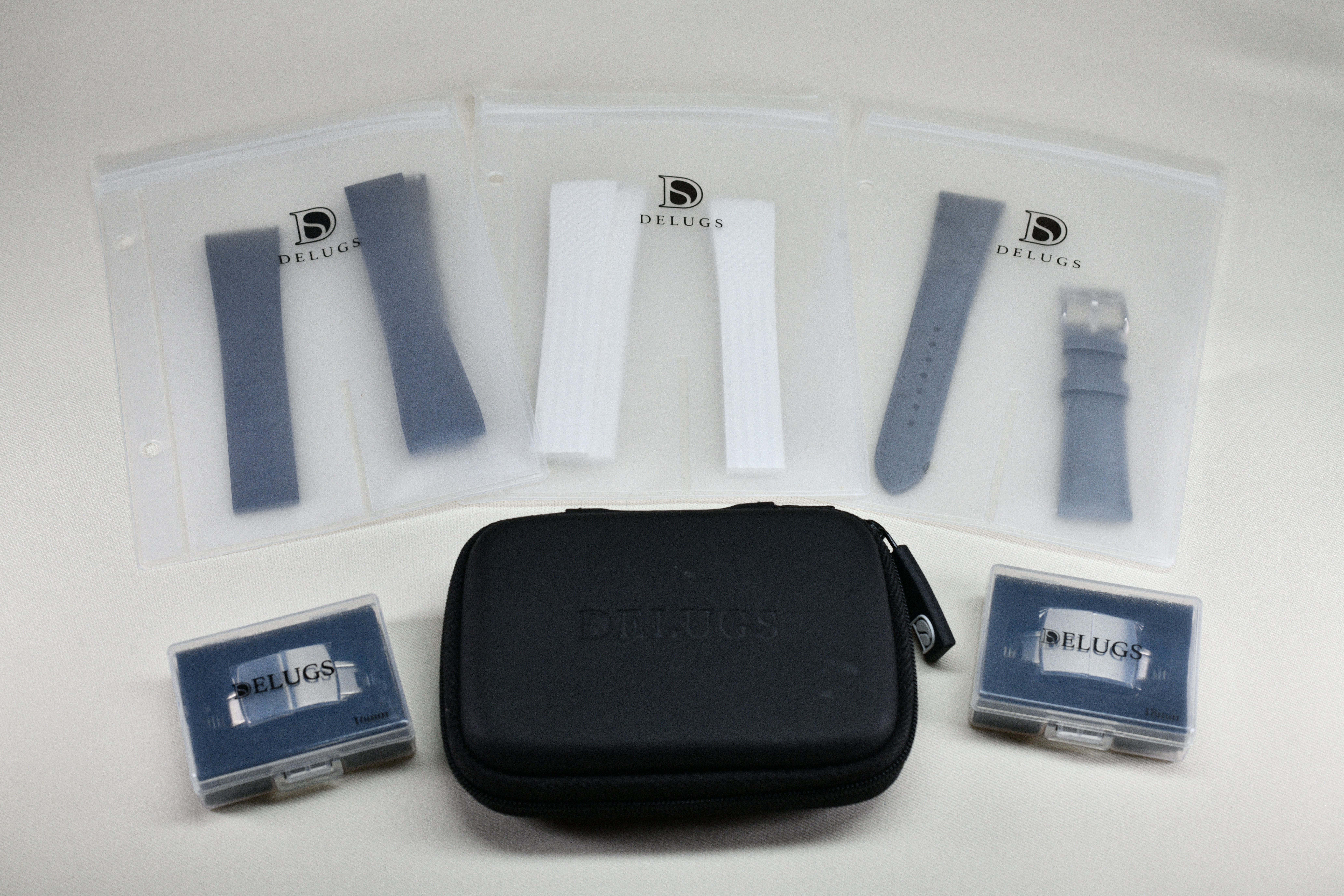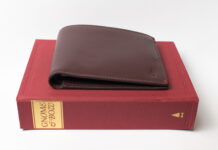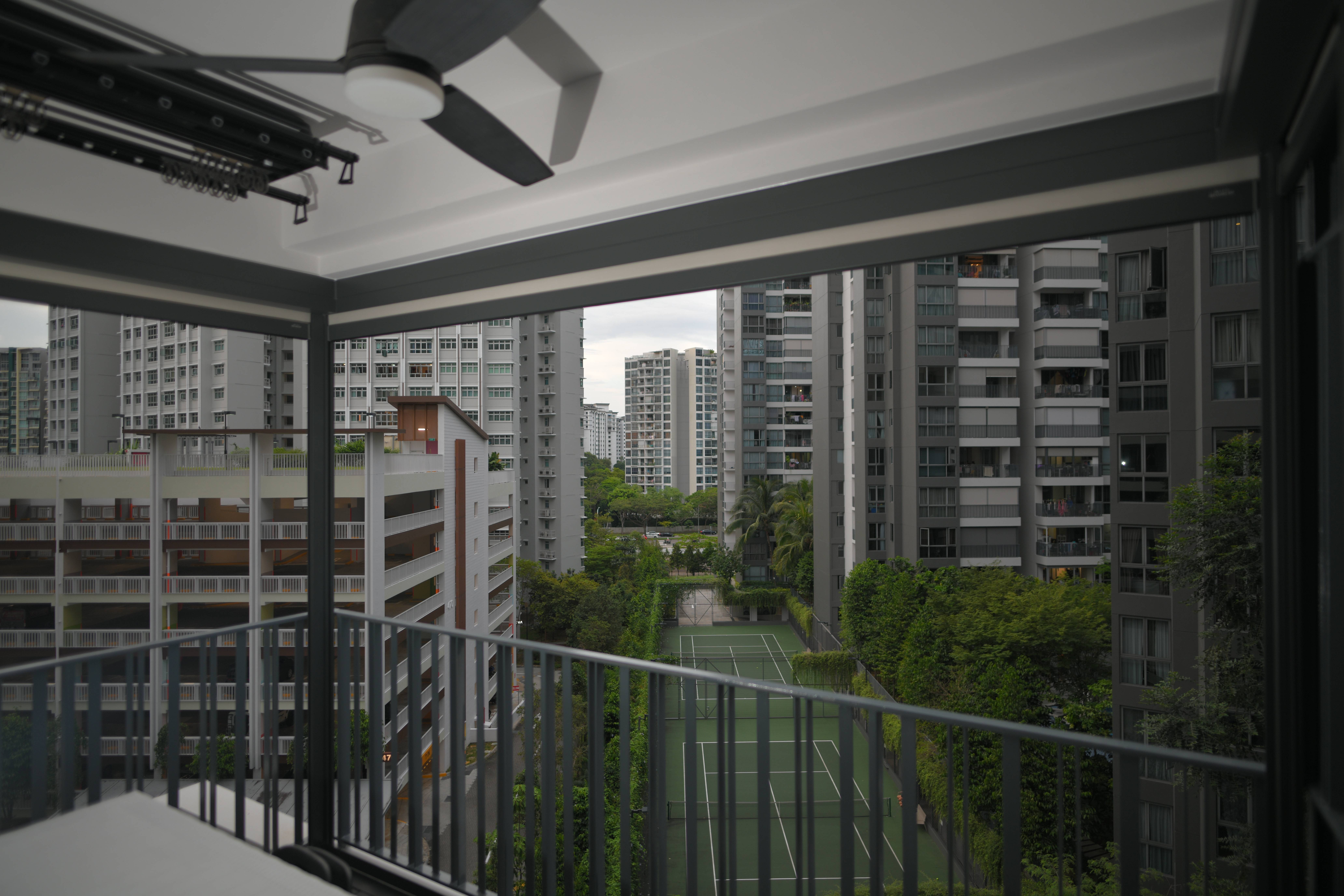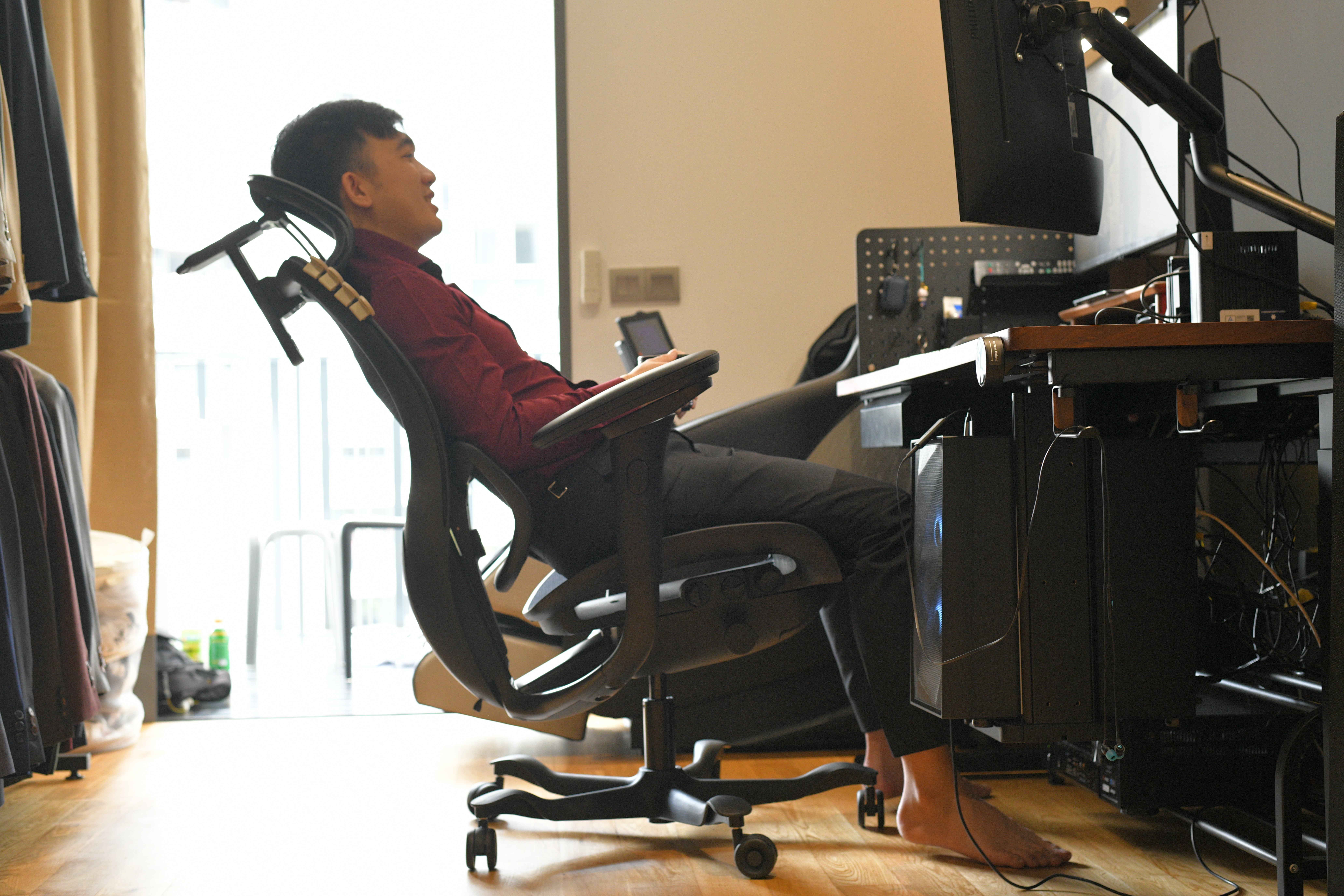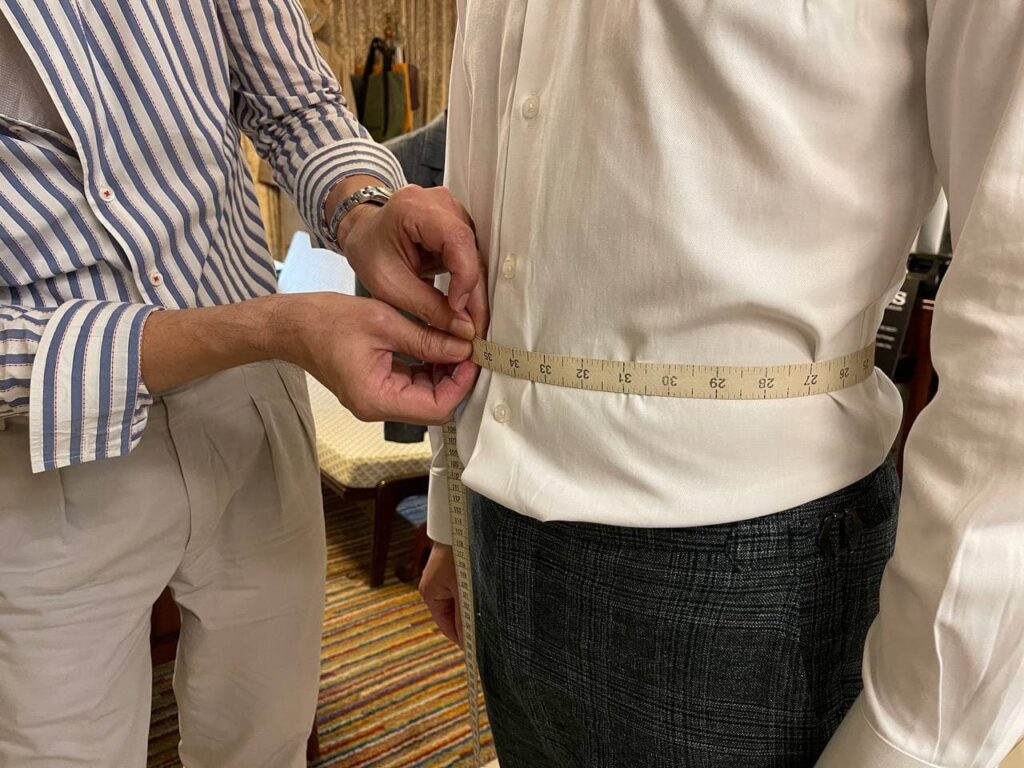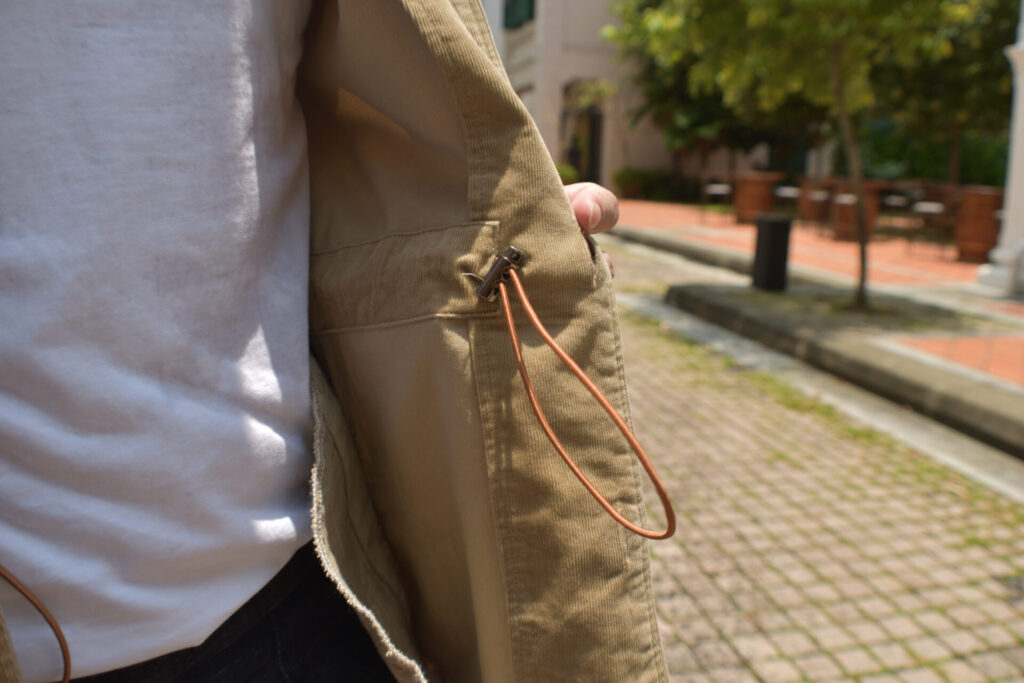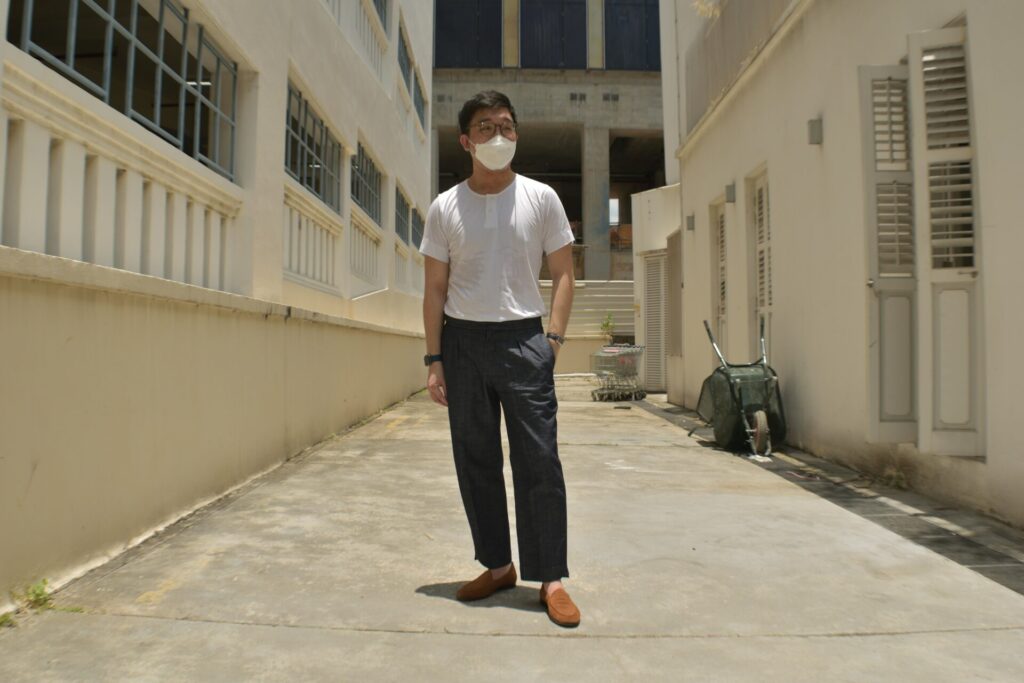Hello everyone and welcome to another of my reviews. In this article, I’ll be reviewing my experience at Pimabs.
I first met Leslie at Closeknip, which was positioned as a more affordable, mass-market complement to Pimabs. For those in the sartorial scene, Leslie is a familiar name, having dressed luminaries such as Dick Lee and Ken Loon over the years. Unfortunately, Closeknip couldn’t survive the financial woes brought by the pandemic, and the brand has since ceased operations. Leslie continues to run Pimabs however, so I decided to pay him a visit earlier this year to see how he was doing.
Pimabs – the Experience
Pimabs is located on the second floor of a shophouse on Cavan road – just below Closeknip’s old showroom.
Upon entering, I was immediately greeted by racks of clothing that lined the walls, which Leslie tells me are mainly customers’ orders. The colourful garments are a stark departure from the orders racks at other tailors, which usually comprise mainly blues, greys and blacks. It was evident that Pimab’s customers – under the guidance of Leslie – are generally more adventurous in their styling. If you’re seeking to stand out, Pimabs (and Leslie) is a great place to start.
Like Closeknip, Pimabs’ showroom – decked out in wooden tones – feels homely from the outset. That’s perhaps no surprise, given that Leslie actually dabbled in interior design before entering the tailoring industry.
That was in 2004 – almost two decades ago. Leslie’s motto is succinctly stated on a banner, where he believes “fashion is now, (but) style is perennial”. With that philosophy in mind, Leslie has led Pimabs to numerous awards, which are prominently displayed above a shelf of fabrics.
I appreciated the old-school vibe of Pimab’s showroom, which complements the age-old art of tailoring perfectly. Unlike some of the other “uncle” tailors I’ve visited, the decor felt classic but never dated – much like Leslie’s approach towards fashion.
As I had just tailored a suit from The Suited Label, I wanted to commission something more casual from Leslie. I relayed that I quite liked the Safari jacket I previously made with Closeknip – it’s something I wear relatively frequently. Leslie said that he was glad to hear that, and suggested doing a shirt jacket this time around.
A shirt jacket is very similar to a Safari jacket, just slightly more casual. It lacks the fabric belt often seen on Safari jackets, and can be worn by itself if desired. However, Leslie suggested pairing the shirt jacket with a henley tee from his off-the-rack essentials line Les is More, as well as a pair of denim Gurkha trousers.
For the fabric, Leslie recommended an earth-toned baby corduroy fabric from Hubeross. I never had a corduroy garment before – it’s generally a cold-weather fabric, and Singapore is usually hot as hell – so I was open to owning one.
As for the trousers, Leslie suggested a denim fabric from Gianfranco Fila, which is actually HST’s own in-house label. As I’ve done a pair of jeans from their fabrics previously, I was more than happy to accept Leslie’s recommendation.
Leslie showed me a customer’s completed pants in order to highlight the differences between Pimabs’ trousers and those I had from Closeknip. Firstly, all Pimabs trousers are hand-stitched, including the waistband. Leslie says handstitching gives the waistband more flexibility as compared to machine stitching, thus providing the wearer with more comfort.
Aside from the waistband, several other aspects – such as the edges of the side-adjusters and pockets – are also handstitched. Leslie concedes that this is mainly for aesthetic purposes, a sign of bespoke craftsmanship that separates the trousers from off-the-rack or even made-to-measure trousers.
As for the buttons, I decided to leave them in Leslie’s hands. His sense of style – finely tuned after almost two decades in the industry – is definitely stronger than mine, so I knew I would be in good hands.
With all the customisations done and dusted, we moved on to the fitting. I’ve already documented the fitting process with Leslie in my initial article on Closeknip, so I won’t go into detail once again here. For better or for worse, my measurements were roughly the same as they were before – I guess my diet hasn’t been effective – and I returned in a few weeks to collect the garments.
Pimabs – Clothing Review
I’ve always liked the clothing done by Leslie, and it was no different this time around.
Wearing the shirt jacket felt a lot like my previous Closeknip safari jacket, which is a good thing since the latter is one of my most-worn articles of clothing. However, it feels slightly more casual due to the lack of the fabric belt, and I can imagine wearing the shirt jacket by itself as well. In other words, it’s a more casual and versatile alternative to the Safari jacket.
As expected, the fit of the shirt jacket is good. The shoulders end around my natural shoulderbones, the sleeves end near my wristbone, and there’s an obvious tapering around the waist. The length is spot-on too, ending near the centre of my crotch.
I’m not sure if sleeve pitch is a thing when it comes to shirt jackets – since they are probably cut different from a traditional suit jacket – but in any case, the sleeves drape nicely with little wrinkling. One can see from the photo above that the shirt jacket covers my bum as well, something Leslie says is essential in tailoring. I remember him saying: “Your bum shouldn’t be sticking out”, as he expressed his disapproval towards the shorter cuts of current trends.
I loved the fit of Pimab’s trousers. One can see a clear difference between the skinnier fit of the pants from The Suited Label, and the looser fit of Pimabs. I would say my personal preference leans more toward Pimabs’ classic cut. Not only is it more comfortable, but it drapes better as well. It’s arguably a more casual fit, but it works wonders on this pair of Gurkha trousers. There’s a Muji-esque feel to the pants – timeless, but not dated.
Moving on to the details, Leslie opted for natural horn buttons – in a light beige shade – to complement the shirt jacket. I find the tone-on-tone aesthetic interesting, and it works rather well.
Nothing is ever typical with Leslie’s creations, and that remains true with the shirt jacket. As it lacked the usual fabric belt of a Safari jacket, Leslie decided to incorporate a drawstring cord – allowing the wearer to adjust the tightness of the shirt jacket – for added flair. It’s certainly a unique touch, one that makes an uncommon garment even more unusual.
But while I like the shirt jacket, I absolutely love the trousers. The details of the trousers – such as the hand-stitching along the pockets and the sides – really shine through.
The hand-stitching can be found on other areas of the trousers too, such as the crotch and the cuff hems. The golden stitching complemented the earth tones of the shirt jacket well, and I decided to play with its accents by pairing the trousers with my suede loafers from CustomMade – a match made in heaven.
The golden hand-stitching can also be found along the Gurkha waistband. It calls attention to it, as it should – the Gurkha waistband is a thing of beauty. I love its clean, seamless aesthetic, and absolutely adore the old-school buckle that Leslie chose. I’ve done Gurkha trousers before, but I’ll definitely say that these are the most unique pair that I’ve worn thus far.
What I liked about the entire outfit was that it can be easily dressed down…simply by removing the shirt jacket. The white henley tee – and its simplicity – works wonders here, acting as the perfect juxtaposition to the highly detailed denim Gurkha trousers. I actually really liked wearing the outfit without the shirt jacket. It’s hip-looking, with a retro but not dated look. I paired the look with the modern reissue of the Cartier Must, which was the icing on top of a very stylish cake.
Conclusion – so Pimabs “shiok” or not?
Definitely so. I’ve always been a fan of Leslie, ever since we first met at Closeknip three years ago. He has a distinct sense of style that’s injected into his clothing – a true auteur of his craft. I appreciated the uniqueness of the shirt jacket (especially with the drawstring cord), like the simplicity of the Les is More henley tee, and loved the denim Gurkha trousers with all the handstitched details. In essence, Pimabs is Closeknip on steroids, although it does also have a corresponding higher price tag – this specific denim Gurkha trousers cost $520, while the shirt jacket was $550.
That’s a pretty penny, but the reality is that bespoke tailoring doesn’t come cheap. However, if you like Leslie’s style (but perhaps not the price point) don’t fret – there’s P+ by Pimabs. P+ by Pimabs is essentially a rebranded version of Closeknip, except that it’s now helmed solely by Leslie. Despite being a fraction of Pimab’s usual pricing, customers still benefit from the full extent of Leslie’s fashion advice, as well as his experience in fitting and measurement. The catch is that it remains a template fitting system (as opposed to a baste fitting) but in my multiple experiences, the fit has been more than good enough – in fact, sometimes better than other tailors that used baste fittings. Once again, that speaks to the experience of Leslie, who prioritises a clean drape.
Currently, P+ by Pimabs is available exclusively on The Shiok Shop. Three packages are available – a half-canvassed 2-piece suit for $899, as well as shirting and trousers bundles. It’s a very affordable entry into the world of sartorial tailoring, and great value-for-money. Whether you consider yourself more fashion-forward, or simply have no idea what your style is, you will be in very safe hands with Leslie.
View P+ by Pimabs on The Shiok Shop here.
Pimabs’ location: 20A Cavan Rd, Singapore 209851
P.S Do check out the new “Discounts!” page for exclusive discounts for Wah so Shiok readers! More brands will be added very soon – stay tuned!
P.P.S If you haven’t already, do follow my social media channels on Facebook here, on Instagram here, and on Youtube here.
P.P.P.S Shiok is a common word Singaporeans use to express admiration or approval. As of 2016, you can find the definition of the word in the Oxford English Dictionary.

